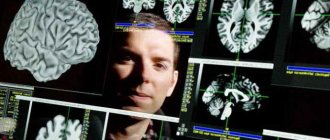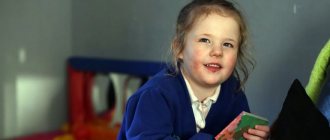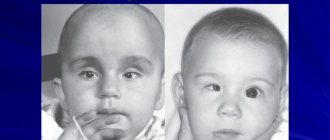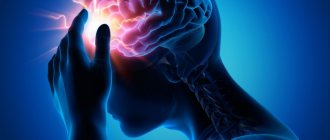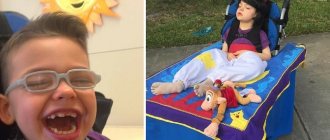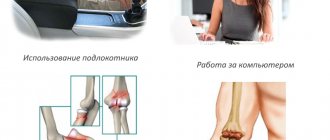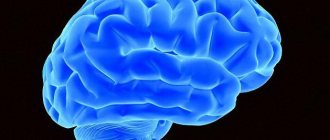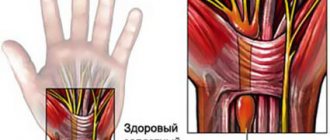In the 18th century, the French doctor Edme Pierre Chavo saw this phenomenon: a person fell asleep and woke up after 10 days, then lived a normal life. But after some time everything happened again. The doctor could only explain this by saying that the person developed brain disorders because patients with schizophrenia fell asleep. However, at that time, such a disease as Klein-Levin syndrome, or sleeping beauty syndrome, was not yet known.
Two centuries later, in 1925, a doctor named Willi Kleine described several cases of the disease in detail. And 10 years later, Max Levin found out that the causes of the disease were digestive disorders. Nowadays, the disease is called: Klein-Levin syndrome, or sleeping beauty syndrome.
The attack can last up to several weeks and the person wakes up only because he is very hungry. Of course, a person wakes up lethargic and slow. But the interesting thing is that he cannot restrain not only hunger, but also sexual desire.
Klein-Levin syndrome, or sleeping beauty syndrome, occurs unexpectedly, lasts for several months or even years, and also disappears suddenly. Sleep attacks become shorter, occur less frequently and gradually disappear completely. The only consequences are the extra pounds you have eaten during your illness.
Theories of disease development
Kleine-Levin syndrome mainly affects men.
The exact causes and mechanisms of development of Kleine-Levin syndrome have not yet been established. Modern research has revealed a connection between such a sleep disorder and disturbances in the functioning of the brain, primarily the hypothalamus and limbic system. Hormonal imbalance, traumatic brain injury and dangerous infections also play a certain role in the development of the disease. The lack of consensus on which of these factors is considered the main one has given rise to a number of theories that explain the nature of this phenomenon in different ways.
Genetic theory
According to this theory, predisposition to Kleine-Levin syndrome is inherited. The disorder is based on certain gene mutations that affect the areas of the brain that are responsible for regulating sleep-wake cycles and the feeling of hunger.
The genetic theory of the development of the disease is confirmed by statistical data: most often the syndrome is diagnosed in Ashkenazi Jews, although the reasons for this “choice” are still not known.
Theory of brain dysfunction
Proponents of this theory associate sleeping beauty syndrome with neuroinfections that disrupt the functioning of certain areas of the brain. First of all, these include meningitis and viral or autoimmune encephalitis. In addition, such a sleep disorder often occurs against the background of the development of malignant or benign brain tumors.
Theory of hormonal changes in the body
Most often, Kleine-Levin syndrome manifests itself in adolescence with its hormonal “swings”. Pathological sleep in this case serves as a kind of protective reaction for the body, primarily designed to stabilize the state of the nervous system of a young man or girl.
Orexin neuron deficiency theory
According to this theory, the syndrome is based on a deficiency of orexins, neurotransmitters that are responsible in the body for, among other things, the regulation of sleep-wake cycles. Their main task is to keep a person in an active state, which means that a lack of orexins is fraught with attacks of pathological drowsiness.
Trigger theory
It indicates, rather, not the causes, but the triggers of the disease. These, according to adherents of this theory, include intrauterine lesions of the fetus, mechanical damage and tumors of certain parts of the brain, previous viral infections and severe stressful situations.
Treatment of the syndrome
There is still no clear treatment system. It is unknown what medications to prescribe, because there are no exact causes of the disease. Yes, and the dream occurs too suddenly, and after it ends, the person lives as he lived, without any consequences.
Medicines are used only in cases where mental disorders manifest themselves against the background of sleep, which disturbs the people around them.
- tranquilizers;
- antidepressants;
- neuroleptics;
- lithium preparations.
But these medications do not cure completely, but only relieve symptoms. The sleeping person’s relatives need to be patient at this time and take care of their loved one. The dream ends as suddenly as it began.
But experts continue to study this disease and finding a cure is a matter of time.
How it manifests itself
Sleeping beauty syndrome is considered a disease of the young. Most often, the disorder manifests itself in adolescence, mainly in boys 12-16 years old. But as soon as the hormonal changes are completed, in almost all cases the symptoms completely disappear.
Patients with Kleine-Levin syndrome do not wake up for 18-20 hours, and in the most severe cases, sleep can last for several days.
The maximum recorded duration of this condition is 6 weeks. Moreover, it is almost impossible to specifically wake up the patient at this time. A person gets out of bed only to satisfy natural biological needs - to go to the toilet and eat.
The feeling of hunger in patients prone to pathological sleep deserves special attention. They suffer from uncontrollable bouts of gluttony the moment they wake up, and indiscriminately consume everything that comes to hand. The most pronounced craving for sweets is manifested, but in general, the taste compatibility of products does not matter. Therefore, salted fish is used, for example, along with porridge or a sandwich with jam.
The main symptoms of sleeping beauty syndrome
There are a number of symptoms that make it possible to recognize that a person is suffering from sleeping beauty syndrome.
These include:
- Hypertrophied drowsiness
. This is the main external sign of a person who has fallen into the tenacious embrace of Morpheus. This sleepy state can last 18 hours a day and for anywhere from several days to two weeks. Special literature describes a case in which a 15-year-old English girl slept for two months and woke up only to go to the toilet and drink. - Bulimia
. In a state of pathological sleep, most patients awaken a feeling of hunger. When they wake up, they only go to the toilet, and then eat everything without stopping. Let's say borscht can be combined with smoked fish and even a piece of cake. An attempt to limit food intake only causes them to have a flash of rage. Having eaten to their fill, they fall asleep again. - Irritability, anger
. During periods of awakening, it is better not to pester such a person with reproaches and solicitude. He will not understand this, since his brain is “disconnected” from the outside world. Excessive instructions only irritate him and cause outbursts of aggression, which is unsafe for others. The patient may be excited or depressed. Often he mutters something under his breath, like a schizophrenic. - Excessive sexuality
. Before falling into a long sleep, such people become “sexually preoccupied”; they are drawn to intimacy, no matter with whom, just to satisfy their desire. And since Kleine-Levin syndrome is characteristic of young people, promiscuity can lead to sexually transmitted diseases. Already during the period of illness, when the patient wakes up, his hypersexuality can manifest itself in masturbation. - The appearance of hallucinations
. The onset of the disease is characterized by the appearance of visual and auditory images. Let's say a young man hears that in the dining room someone wants to steal a bun from his table. This is one of the symptoms of an incipient feeling of hunger. - Lack of interest in everything
. A guy or girl in this state misses classes at school or college and may not go to work. They avoid friends and acquaintances, because they are only possessed by one thought: they need to get enough sleep and eat well. - Low blood sugar levels
. It decreases during sleep and is restored after the cessation of the disease. This may be due to the work of the pancreas, which produces insulin, which maintains the amount of glucose in the body at normal levels. - Vegetative signs
. These symptoms of sleeping beauty syndrome manifest themselves in blue lips, the area of skin under the nose, bluish color of the hands and feet, and excessive sweating. - Inadequate sleep
. During attacks they are shallow, accompanied by restless movements of the arms and legs; the sleeper reacts painfully to noise and light. After waking up he does not feel rested, he is drawn to sleep again. Only after the end of the illness does he feel sleepy. - No serious health problems
. During an attack of hypersomnolence, your general health does not deteriorate. As a rule, all indicators, for example, body temperature, pulse and blood pressure, are normal. The only exception is an excessive feeling of hunger, due to which the patient can gain extra pounds. - Forgetfulness
. When the illness has passed, the person does not remember at all what happened to him. He believes that he slept well, is returning to a normal lifestyle and is not tormented by doubts about his health. - Periods between attacks of illness
. They are deeply individual, and therefore vary in duration. On average, it lasts six months when a person leads a completely normal life, and then suddenly falls into hibernation again.
It is important to know! Although the disease is considered incurable, by the age of 30 it usually goes away on its own. What this is connected with is unknown.
Treatment
There is currently no single treatment regimen for Kleine-Levin syndrome. And yet, at the first signs of such a disorder, it is important to seek help from a neurologist, who will conduct the necessary examinations and prescribe symptomatic therapy.
Psychology
The work of a psychologist brings positive results in mild cases of the disease. Psychoanalysis is actively used to identify and analyze the hidden causes of the problem, and art therapy and symboldrama help to normalize the emotional state of patients. Creative therapy is successfully used when working with children: drawing, modeling and doll therapy have a positive effect on their psyche. And the method of symboldrama, or waking dreams, allows you to assess whether an adult patient needs the help of a professional. For this purpose, he is given a certain task, for example, a life situation from which he needs to find a way out. And depending on which path of events he chooses, a conclusion is drawn about the state of his psyche.
Creative therapy has been successfully used when working with children.
Medicines
Medications for patients with sleeping beauty syndrome are prescribed only in the most severe cases. These are mainly psychostimulants to relieve attacks of pathological drowsiness, and drugs from the group of antidepressants, tranquilizers or antipsychotics to stabilize the state of the patient’s nervous system.
Jarcho-Levin syndrome. Symptoms and manifestations
Jarcho-Levin syndrome is characterized by multiple skeletal deformities, fusion and/or underdevelopment of the vertebrae, small, malformed or missing ribs and a small chest cavity, therefore the child is at high risk of developing repeated and severe lung infections (pneumonia). As a result of such developmental problems, the neck and torso will be short, which can lead to dwarfism. The toes are usually webbed.
In addition, children with this syndrome may have other features such as a wide forehead, wide nasal bridge, anteversion of the nostrils, and a prominent occiput. Sometimes, gastric and pelvic bloating can occur due to bladder obstruction. Undescended testicles, absence of external genitalia, double uterus, anal atresia, and defects in brain development may also be present.
Prevention
As with other similar disorders, such as sleep paralysis or somnambulism, you can reduce the likelihood of attacks by taking certain preventive measures. Experts recommend:
- adhere to a daily routine, devoting at least 8 and no more than 9 hours to sleep;
- reduce the consumption of alcohol, energy drinks, coffee, chocolate and heavy foods;
- during the day, go to rest 1-2 times for 30-45 minutes;
- in the evening, avoid activities that require physical or mental activity.
The prognosis for treatment of Kleine-Levin syndrome is favorable. People say that teenagers “outgrow” the disease - the older the child, the less often the attacks occur, and over time they completely disappear. In general, in all known cases, sleeping beauty syndrome went away on its own, and properly selected maintenance therapy helped the patient lead a normal life outside of episodes.
| Share: |
Similar materials
Symptoms
The symptoms are listed below in order of importance. The main signs of the syndrome are described first, then less significant manifestations are reflected in descending order.
- Daily sleep duration is more than 18 hours for 5-20 days in a row.
- Cases of hypersomnia - prolonged sleep - are repeated at least 1-2 times a year. That is, symptoms occur with a certain frequency.
- There is unbearable drowsiness, which has a bad effect on performance and quality of life. After a normal 8-hour sleep, a person’s condition does not improve.
- Decreased attentiveness.
- Increased appetite (most often increased cravings for sweets)
- Increased sexual desire.
- Disturbed perception of reality
- Amnesia.
- Anxiety.
- Apathy.
- No enuresis.
- Depression.
- Hallucinations.
- There are symptoms of other parasomnias - sleep disorders.
Note that sleeping beauty syndrome is rarely associated with epilepsy, chronic stress or sleep apnea.
Interesting fact: Kleine-Levin syndrome most often occurs in teenage boys and men aged 18-25 years.
Increased sexual activity and increased appetite are important criteria for sleeping beauty syndrome. However, these signs do not 100% indicate the disease.
In the study, some women experienced the disorder before their menstrual cycle. However, in their case there were other symptoms - increased appetite, increased sexual desire and depression. They also experienced multi-day but rare episodes of hypersomnia, which is characteristic of sleeping beauty syndrome.
With a sleep disorder, aggressiveness, irritability, and a negative reaction to light and noise are noted. In addition, sweating, darkening of the skin around the eyes, and a blue tint to the skin of the hands and feet may occur.
